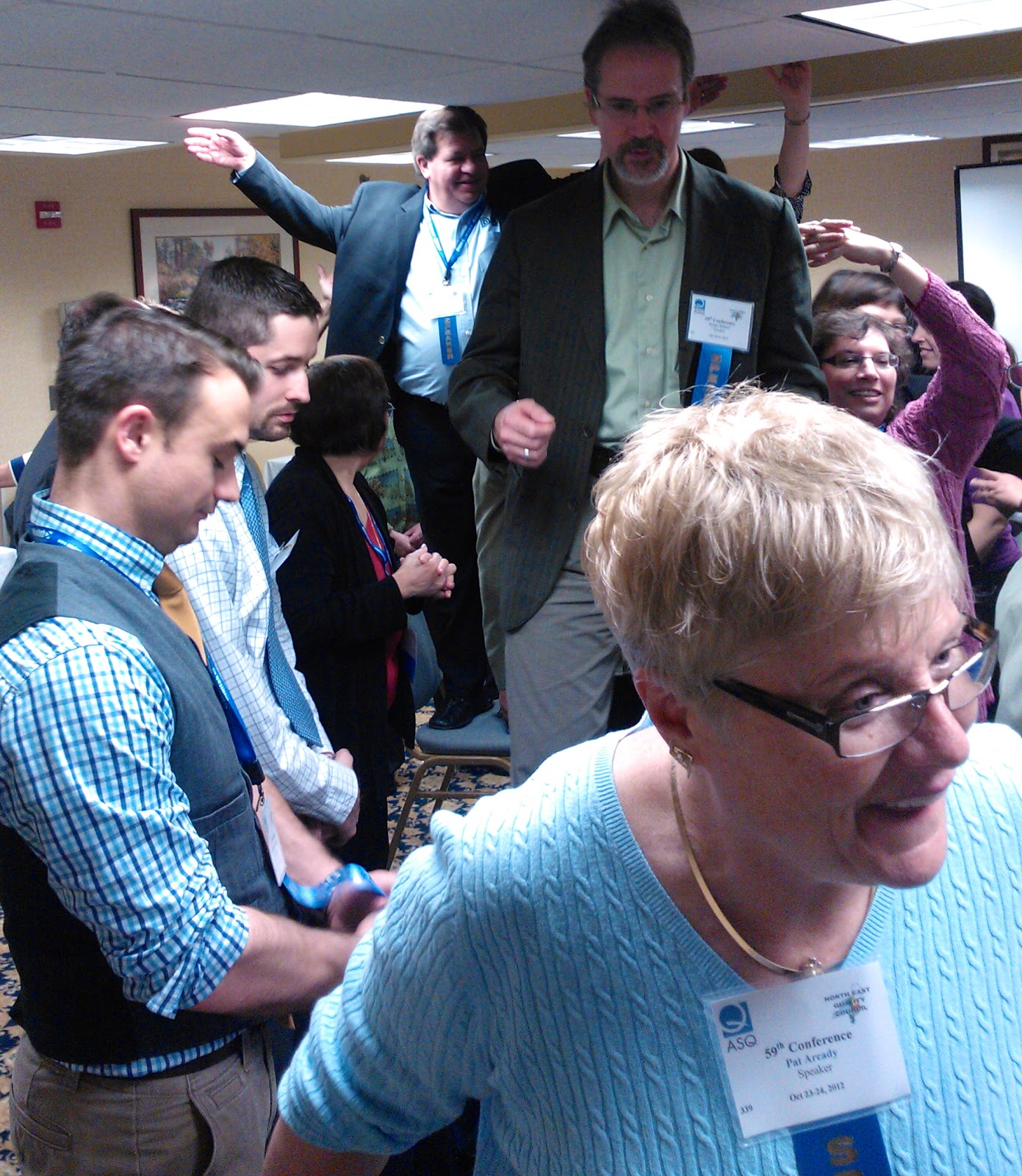Iteration 1: The manager is superskilled, practically omniscient; he can solve any problem himself and just command the workers to obey his wishes. The workers await commands and don’t dare speak up, else the manager might lose face. The manager’s assignment is to arrange the workers into a line based on some criterion that he doesn’t have enough information about, like “alphabetically by middle name,” without any input from the workers. Give the manager one minute. Start the timer, and let him go.
Iteration 2: Let the workers arrange themselves horizontally across the room from left to right by tenure at their job–how long have they worked for their company?
Iteration 3: Let the workers arrange themselves vertically across the room from front to back by how far the traveled to the event.
Iteration 4: Ask the workers to arrange themselves in two dimensions: first, horizontally from left to right, by expertise in Agile; then, staying in position from left to right, move vertically from front to back to show their experience with Agile games.
Debrief: What did it feel like as the manager in the first iteration? As the workers? In the later iterations, what did it feel like? How easy or hard was it to arrange yourselves?
Source: Line Up is documented in Moving Beyond Icebreakers and elsewhere. I first played it with Lysa Adkins at Scrum Gathering Orlando 2010. The idea of a manager commanding the workers in Iteration 1 is my own.
60 paces
The goal of the game is to walk around the room, taking as many steps as possible in two minutes.
Iteration 1: Form pairs. In each pair, one person volunteers to be the manager. The worker can only do what the manager says. The manager can only issue four commands: Go Straight, Stop, Turn Left, and Turn Right. Using a stopwatch, give the pairs two minutes to take as many steps as they can.
Iteration 2: No one is a manager; everyone is a self-managed worker. Self-managed workers, how many steps can you take in two minutes?
Debrief: How many steps did you take in Iteration 1? In Iteration 2? Were you more or less productive in Iteration 1? What was it like to be the manager? The worker? Was it fun?
Triangles
Iteration 1: Secretly pick two friends. Move around the room so that you and your two friends form the points of an equilateral triangle. Continue until everyone stops moving.
Iteration 2: You are a secret agent. Secretly pick a friend. Secretly pick your friend’s enemy. Your job is protect your friend from his enemy. Shield your friend by standing directly between him and his enemy. Continue until everyone stops moving.
Debrief: What did that feel like? What would that have been like if you could only move when and where your manager tells you to?
Human knot
Everyone stands near each other in the center of the room. Raise your right hand, reach across the group, and hold someone else’s right hand. Raise your left hand, reach across the group, and hold a different person’s left hand. Now everyone is connected in a knot. Unravel the knot into a circle of people.
Debrief: Was that easy or hard? Were there any spontaneous leaders guiding us to untangle? Was this fun? Did we violate any social taboos, was that OK? Does the number of people in the knot make a difference?
Human sculpture
The participants are the sculptors and the raw material of a human sculpture. Give them an inspiring theme, and ask them to form themselves into some object or scene.
Debrief: What did that feel like? What is your role in the human sculpture? Why did you choose that role? What was the level of teamwork to be able to produce the sculpture?






